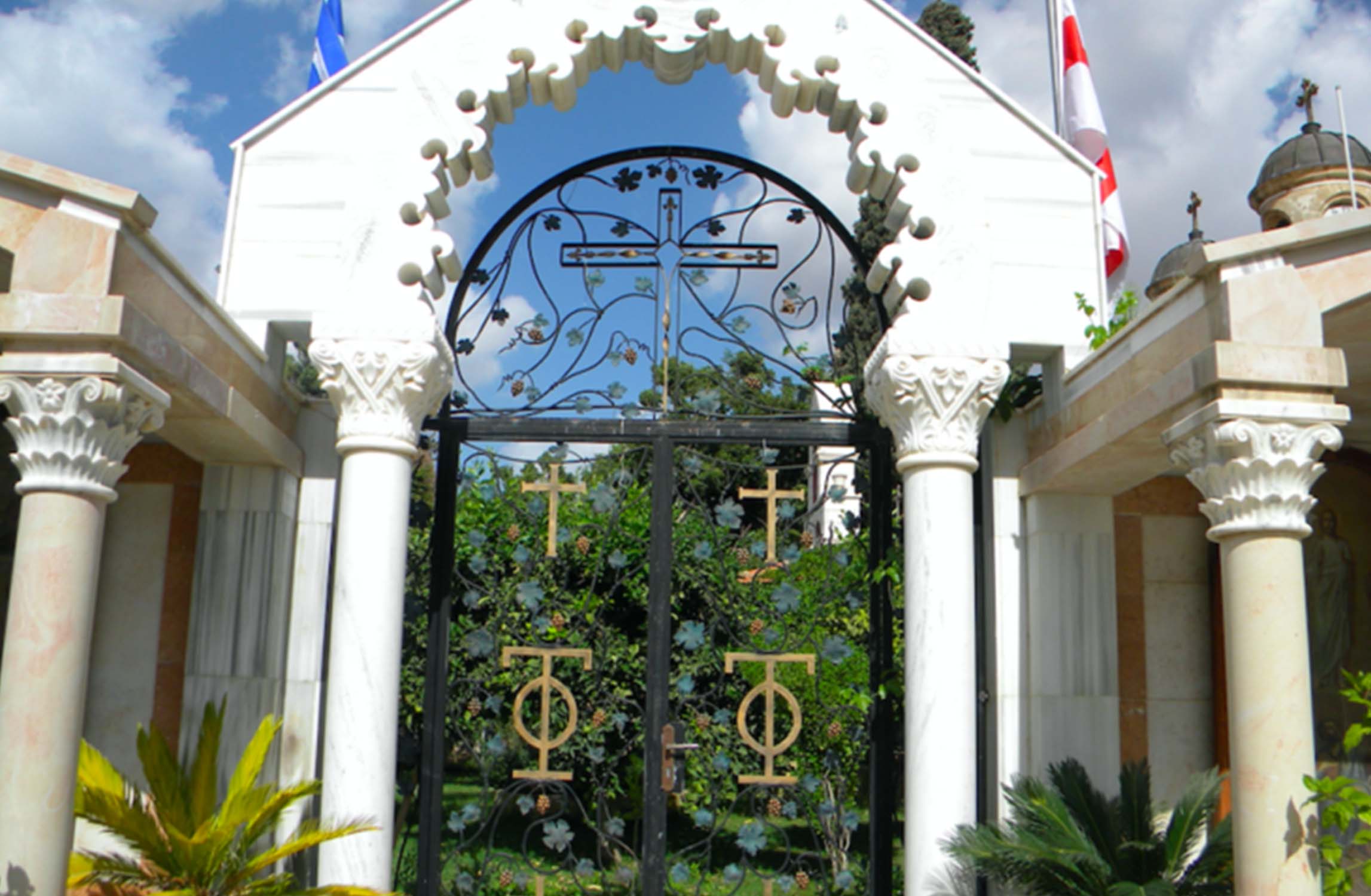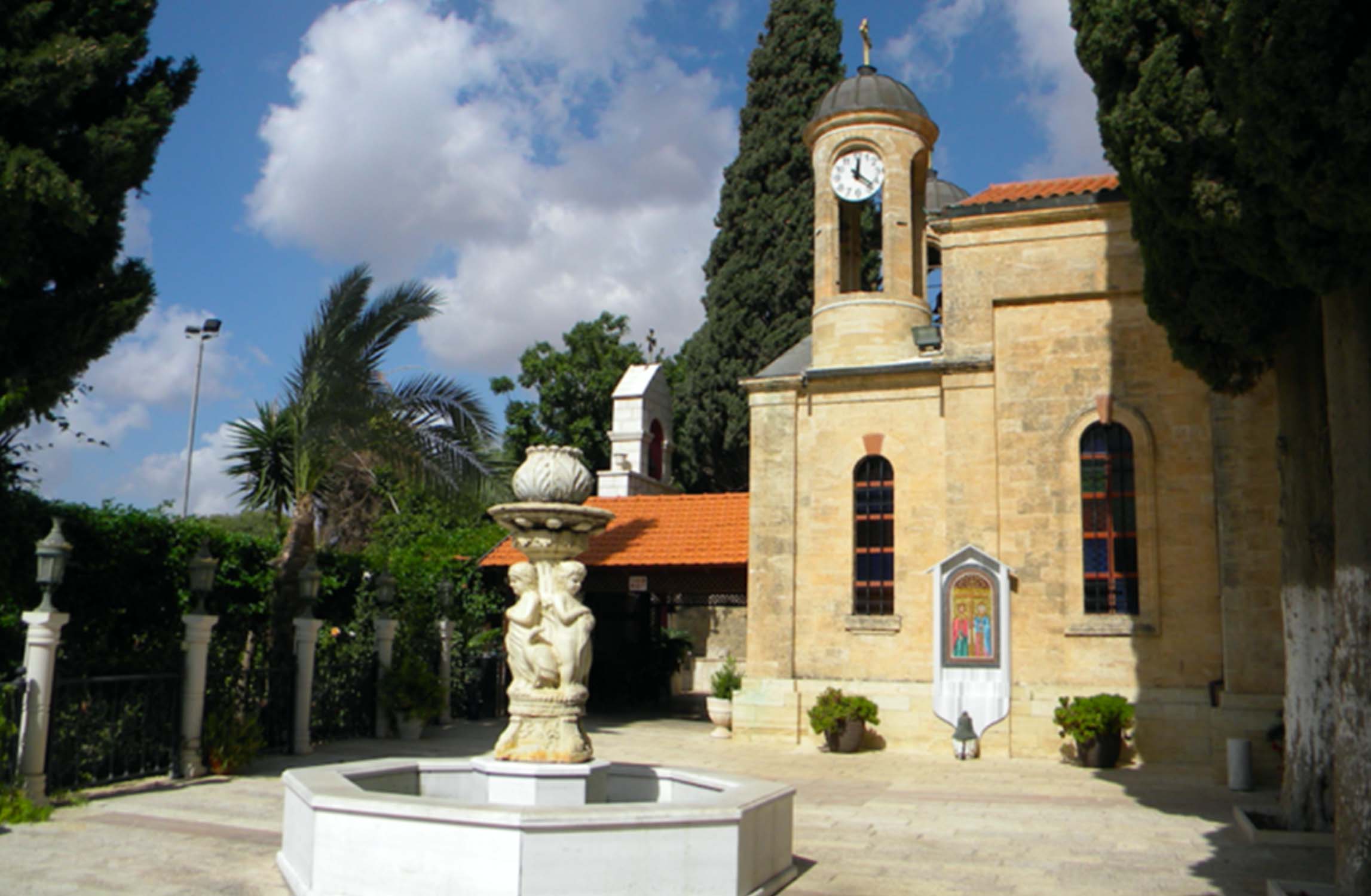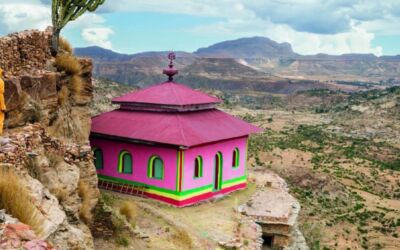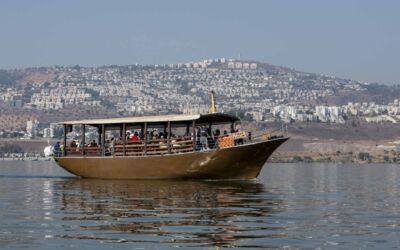
The Miracle at Cana
The area around the Sea of Galilee is rich in biblical sites. One site that no visitor should miss is Cana. Also known as Kfar Kanna, Cana is located only a few miles north of Nazareth, once home to Jesus and his earthly family. This is the region where Jesus grew up and spent his early ministry. Cana is a small village with a population of about 17,000 and is famous for Jesus first miracle. Cana is also known as the birthplace of one of the early Apostle Nathaniel whom some scholars link with Bartholomew, one of the twelve disciples of Christ. However, it is not necessarily St. Bartholomew who draws over 200,000 pilgrims to Cana each year; it all has to do with a marriage ceremony.![]()
In the fourth Gospel, the Apostle John records the events that have come to be known as The Miracle at Cana:
“On the third day there was a wedding in Cana of Galilee, and the mother of Jesus was there; and both Jesus and His disciples were invited to the wedding. When the wine ran out, Mary mother of Jesus said to Him, “They have no wine.” and Jesus said to her, “Woman, what does that have to do with us? My hour has not yet come.” Mary, His mother said to the servants, “Whatever He says to you, do it.

Interior of the church in Cana
“Now there were six stone water pots set there for the Jewish custom of purification, containing twenty or thirty gallons each. Jesus said to them, “Fill the water pots with water.” So they filled them up to the brim, and He said to them, “Draw some out now and take it to the headwaiter.” So they took it to him.
When the headwaiter tasted the water which had become wine, and did not know where it came from (but the servants who had drawn the water knew), the headwaiter called the bridegroom, and said to him, “Every man serves the good wine first, and when the people have drunk freely, then he serves the poorer wine; but you have kept the good wine until now.” This beginning of His signs Jesus did in Cana of Galilee, and manifested His glory, and His disciples believed in Him. (John 2:1-11)
This is an account of Jesus’ first miracle, and since that time, the village of Cana has become forever linked with marriage and, to some degree, with wine. Today, groups traveling through the Galilee, often visit Capernaum, Magdala, and Nazareth. They almost always stop in Cana because, more than just sightseeing, Cana offers the visitor an opportunity to participate as well. Couples, especially those who have been married for a long period of time, often look to renew their vows. What better place in the world to renew their wedding vows than here, the site of Jesus’ first miracle, The Wedding in Cana. Of course, the private dwellings where the family wedding took place have long been covered by time. Not all archaeologists agree on the exact site where the event occurred. History tells us that a church was built in Cana by Empress Helena (mother of Christian convert, Emperor Constantine) in the 4th Century, and this was identified with the ruins of a large building found by travelers to Kfar Kanna in the 17th Century. Today, on this site, you will find the Franciscan Wedding Church.

Built in the 1880s, this small church is built on two levels. The narrow chapel of the upper church supports a simple domed roof. A mosaic fragment on the wall near steps leading to the lower level holds an inscription in Aramaic, the language of the area at the time of Jesus. The lower level houses a small museum with artifacts from the site, including six stone water jars, typical of thoseof the first century.
Today, the center of this Arab village of Kafr Kanna (Cana) has been renovated with a promenade and small plazas. Inthe town, you will find a number of shops that sell souvenirs of Cana. Some even carry local wine with labels indicating that the bottles came from Cana. These souvenirs will no doubt end up being a small reminder of the spiritual experience of Cana. As another visitor to the Holy Land wrote, “It is a good and important stop. Don’t miss the opportunity to experience it.”
Each jar would have been filled with 20-30 gallons of water that would have been used by the wedding guests for ritual washing of the hands before the meal. Extensive renovations of the church in the 1990s allowed for contemporary archaeological research. Excavations in and around the church have unearthed the remains of three levels of buildings beneath the present structure: a 14th century building of the Middle Ages, a Jewish synagogue from the 5th century, and the ruins of private dwellings from the 1st-4th centuries.
For many couples, having a wedding or renewal of vows in the Franciscan Wedding Church is a highlight of their time in the Holy Land. One woman from South Carolina wrote about her recent trip. She and her husband renewed their vows along with five other couples. “Who would have thought,” she said, “that we would be blessed to be in the place of the first miracle, and after 52 years of marriage, that too is a miracle.”
Near the Wedding Church is another, the Greek Orthodox Church of St. George (also known as the Greek Orthodox Church of the Wedding Feast.) Built in 1886, it is a large structure with clock and bell towers, and surrounded by a spacious courtyard with trees, flowers, an ornate water fountain, and most importantly, benches where you can sit and enjoy the tranquility of the spot. Nearby, you will see a third, small chapel built by the Franciscans and dedicated to St. Bartholomew.

Today, the center of this Arab village of Kafr Kanna (Cana) has been renovated with a promenade and small plazas. Inthe town, you will find a number of shops that sell souvenirs of Cana. Some even carry local wine with labels indicating that the bottles came from Cana. These souvenirs will no doubt end up being a small reminder of the spiritual experience of Cana. As another visitor to the Holy Land wrote, “It is a good and important stop. Don’t miss the opportunity to experience it.”
Nicholas Mancino, author of this article, is president of Regina Tours. Cana is a featured highlight in many of our Holy Land pilgrimages, including the upcoming Holy Land & Oberammergau program. Reach us at 1-800-CATHOLIC or at www.Regina-tours.com for more information.
Related Posts
Video: The Road to Jerusalem
In the holy land, where every stone has a story to tell, we take a break on the road to Jerusalem and explore what daily life in the time of Christ was like:
Video: explore the immense cultural riches of Ethiopia
The rock-hewn churches of Lalibela; St. Mary’s church where the Ark of the Covenant is believed to lie; the castles of Gondar; the monasteries of Bahir Dar; these few highlights barely scratch the surface of the immense hidden treasure trove waiting to be explore.
Ageless Ethiopia
Though it may not be considered a wealthy nation by economic standards, Ethiopia is a land immensely rich culture and heritage. The country is old beyond imagination, home of “Lucy” the 3 million years old human ancestor, but it also offers modern conveniences for visitors.
Video: What a journey to the Holy Land means to me
It can be difficult to summarize all the senses, emotions and learnings one experiences when visiting the lands of the bible for the first time.



